Oxidative Damage of a Superalloy in High-Loaded Contacts
Abstract
1. Introduction
2. Results
2.1. Diffusion Model
2.2. Contact Model
2.3. CG-Verfahren
3. Conclusions
Author Contributions
Funding
Acknowledgments
Conflicts of Interest
Abbreviations
| MDPI | Multidisciplinary Digital Publishing Institute |
| SAM | Semi-analytical Methode |
| FEM | Finite Elemente Methode |
| CG | Conjugate Gradient |
| c | concentration |
| s | phase boundary |
| D | Diffusion coefficient |
| T | temperature |
| t | time |
| jump concentration | |
| location coordinates | |
| growth coefficient | |
| potential function | |
| ~ | frequency domain |
| u | displacement |
| body stress | |
| frequency domain coordinates | |
| k | number layers |
| coefficient Matrix | |
| coefficient solution vector | |
| coefficient boundary vector | |
| displacement influence coefficient matrix | |
| stress influence coefficient matrix | |
| discretization points | |
| modulus of elasticity | |
| t | layer thickness |
| F | force |
| gap function | |
| geometry | |
| pressure | |
| Contact area | |
| contact length |
Appendix A
References
- Wagner, C. Reaktionstypen bei der Oxydation von Legierungen. Zeitschrift für Elektrochemie Berichte der Bunsengesellschaft für physikalische Chemie 1959, 63, 772–782. [Google Scholar]
- Gesmundo, F.; Viani, F. Transition from internal to external oxidation for binary alloys in the presence of an outer scale. Oxid. Met. 1986, 25, 269–282. [Google Scholar] [CrossRef]
- Heikinheimo, L.; Baxter, D.; Hack, K.; Spiegel, M.; Hämäläinen, M.; Krupp, U.; Penttilä, K.; Arponen, M. Optimisation of in-service performance of boiler steels by modelling high-temperature corrosion. Mater. Corros. 2006, 57, 230–236. [Google Scholar] [CrossRef]
- Javierre, E.; Vuik, C.; Vermolen, F.; van der Zwaag, S. A comparison of numerical models for one-dimensional Stefan problems. J. Comput. Appl. Math. 2006, 192, 445–459. [Google Scholar] [CrossRef]
- Lagoudas, D.C.; Entchev, P.; Triharjanto, R. Modeling of oxidation and its effect on crack growth in titanium alloys. Comput. Methods Appl. Mech. Eng. 2000, 183, 35–50. [Google Scholar] [CrossRef]
- Polonsky, I.A.; Keer, L.M. A numerical method for solving rough contact problems based on the multi-level multi-summation and conjugate gradient techniques. Wear 1999, 231, 206–219. [Google Scholar] [CrossRef]
- Cai, S. 3D Numerical Modeling of Dry/Wet Contact Mechanics for Rough, Multilayered Elastic Plastic Solid Surfaces and Effects of Hydrophilicity/Hydrophobicity during Separation with Applications. Ph.D. Thesis, The Ohio State University, Columbus, OH, USA, 2008. [Google Scholar]
- Chen, W.W.; Zhou, K.; Keer, L.M.; Wang, Q.J. Modeling elasto-plastic indentation on layered materials using the equivalent inclusion method. Int. J. Solids Struct. 2010, 47, 2841–2854. [Google Scholar] [CrossRef]
- Senge, M.; Steger, J.; Brückner-Foit, A.; Rienäcker, A. Quantitative analysis of diffusion processes associated with γ′-depletion in Ni-base superalloys. Materialia 2018, 3, 41–49. [Google Scholar] [CrossRef]
- Özdemir, O.; Ancellotti, S.; Rienacker, A. Tribologische Charakterisierung rauer Oberflächen mit Berücksichtigung von Oberflächenbeschichtungen bei Mischreibung. In Proceedings of the 58th Tribology Conference, Gottingen, Germany, 27 September 2017. [Google Scholar]
- Bhushan, B.; Peng, W. Contact mechanics of multilayered rough surfaces. Appl. Mech. Rev. 2002, 55, 435. [Google Scholar] [CrossRef]
- Polonsky, I.A.; Keer, L.M. A fast and accurate method for numerical analysis of elastic layered contacts. J. Tribol. 2000, 122, 30–35. [Google Scholar] [CrossRef]
- Polonsky, I.A.; Keer, L.M. Stress Analysis of Layered Elastic Solids With Cracks Using the Fast Fourier Transform and Conjugate Gradient Techniques. J. Appl. Mech. 2001, 68, 708. [Google Scholar] [CrossRef]
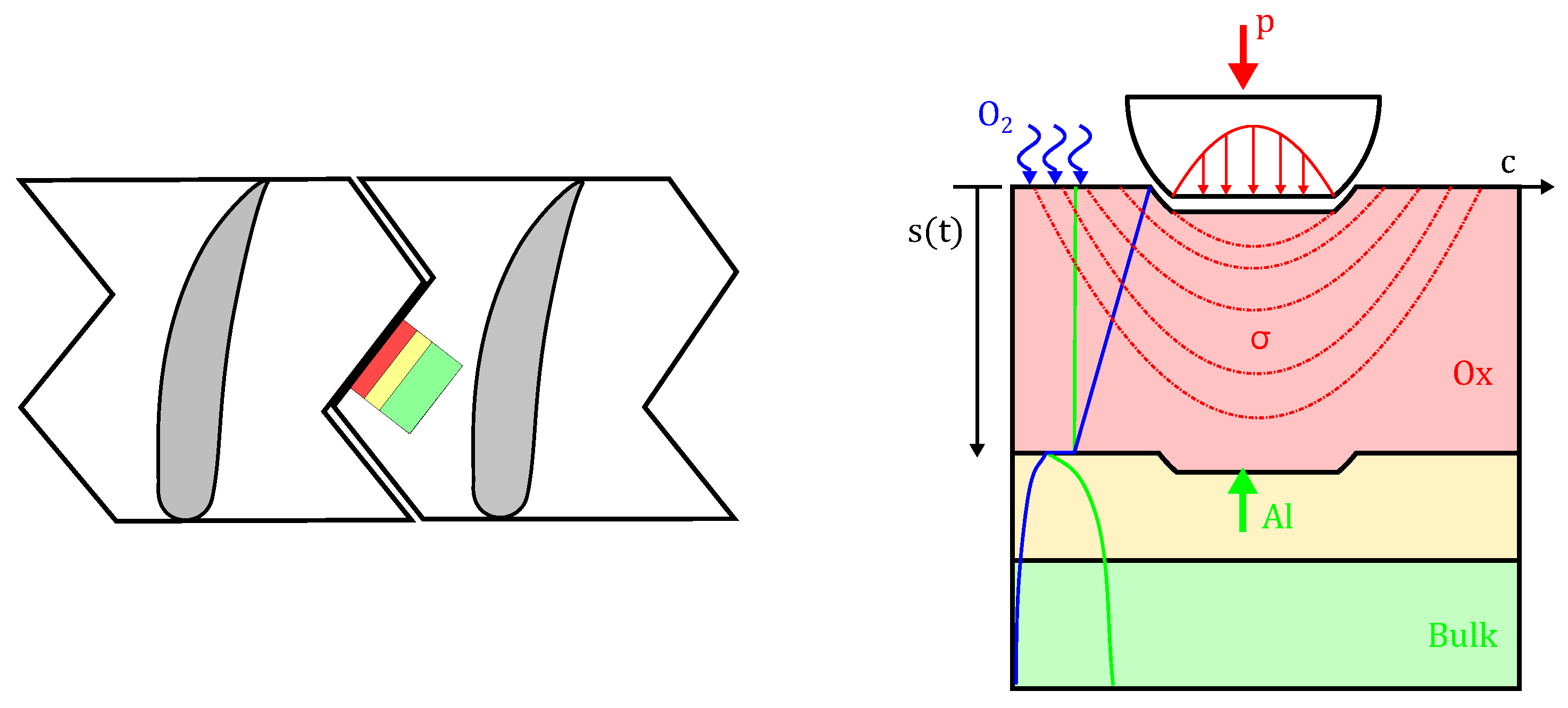
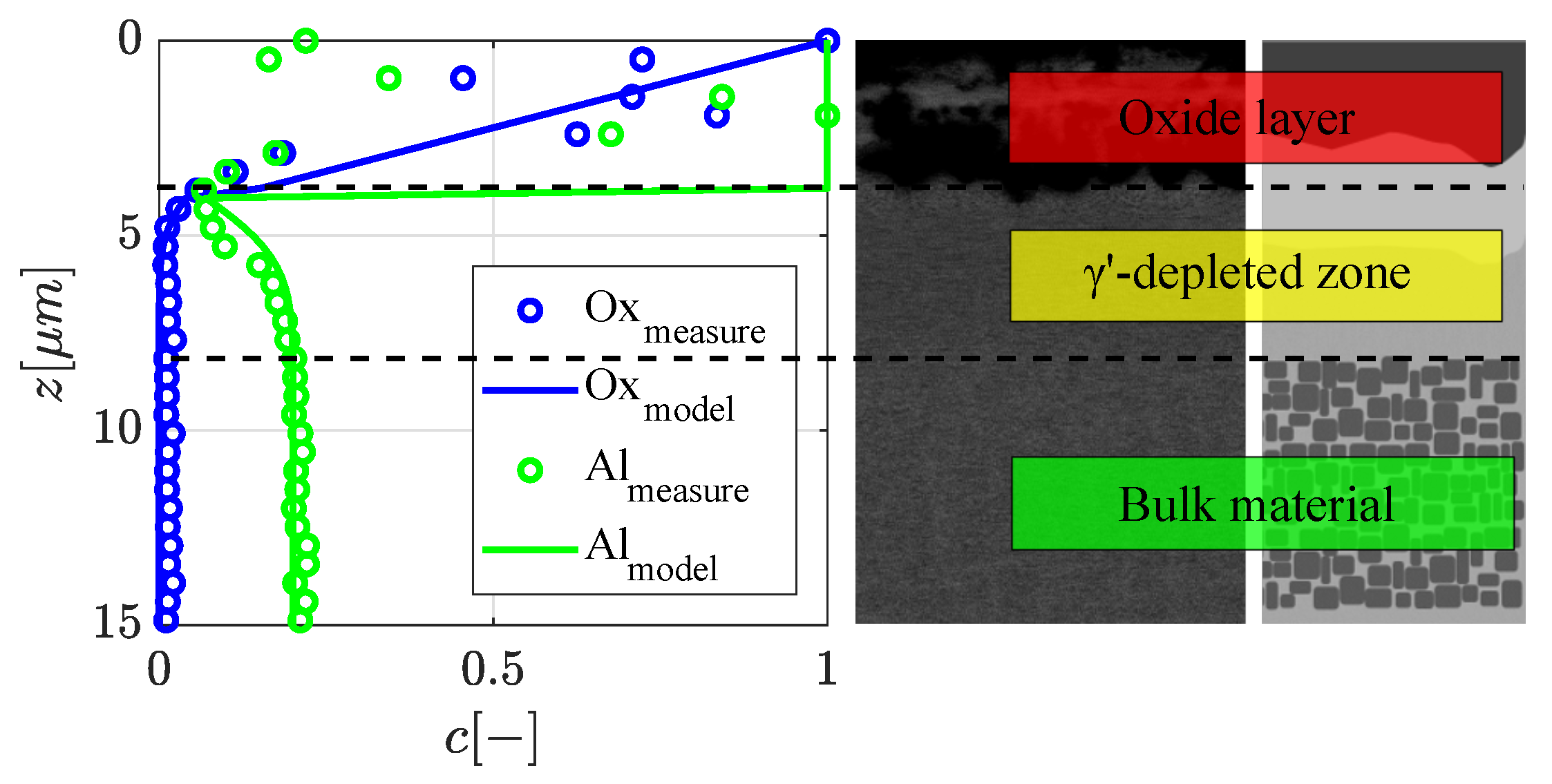
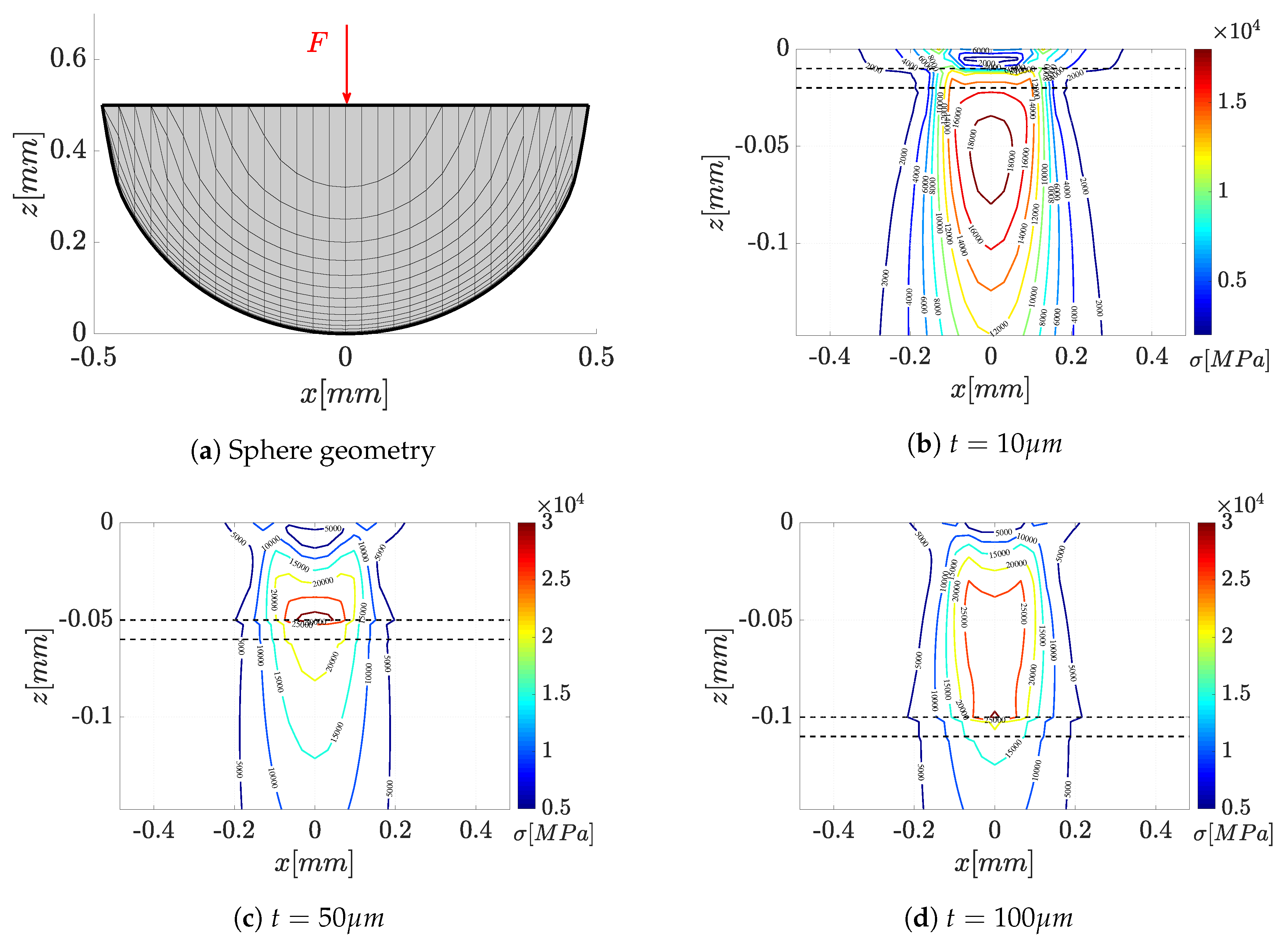
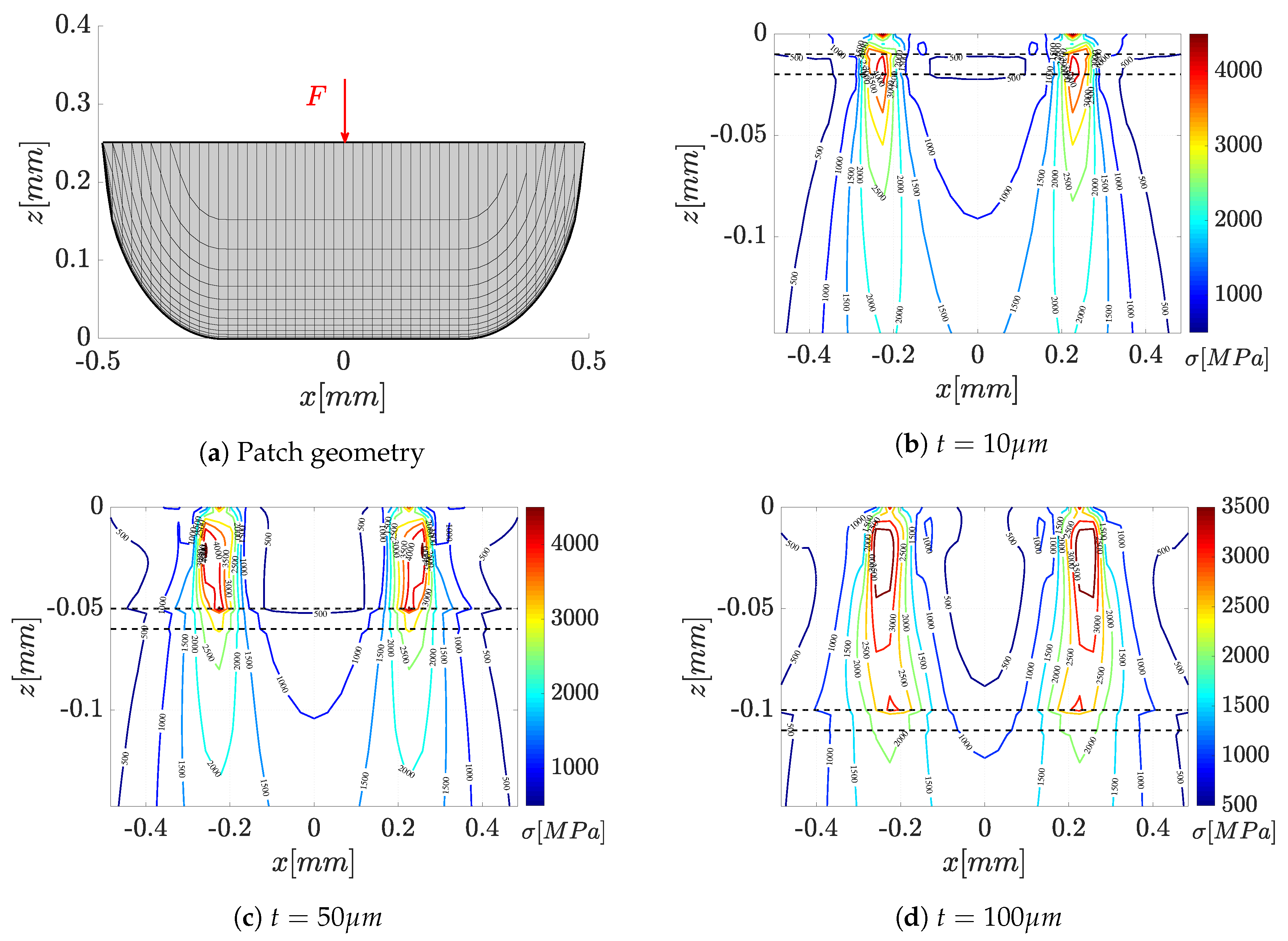
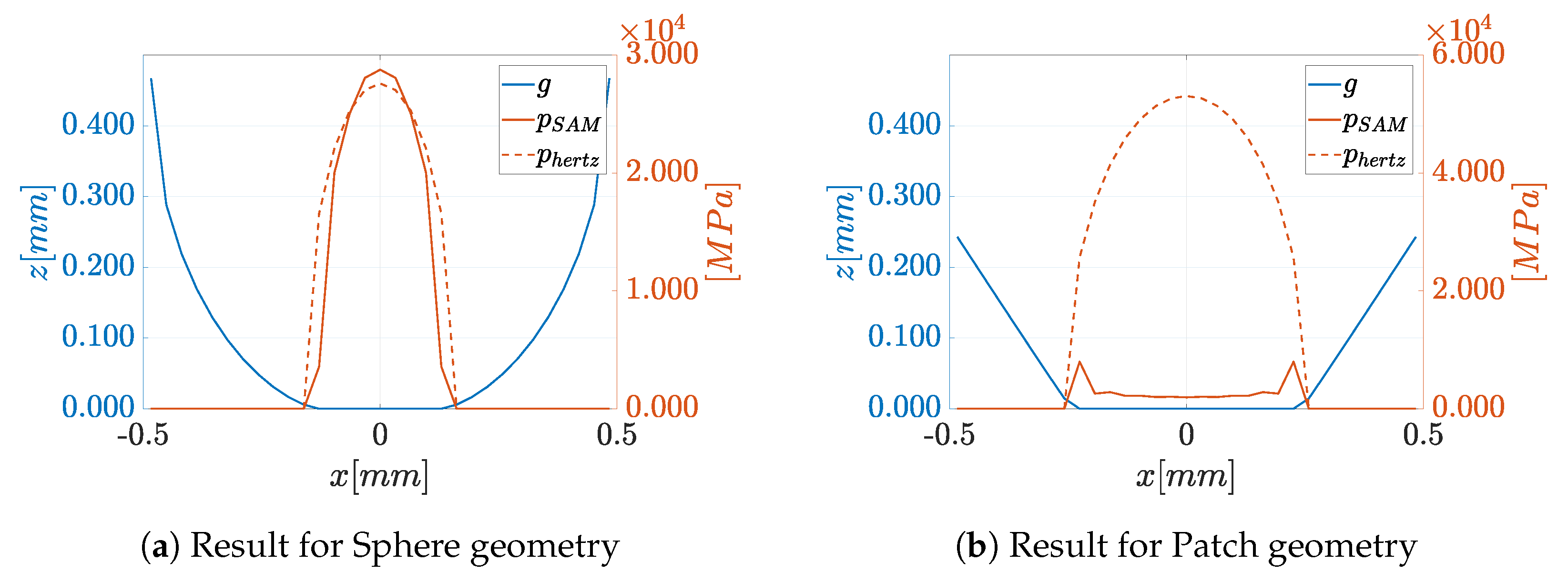
© 2019 by the authors. Licensee MDPI, Basel, Switzerland. This article is an open access article distributed under the terms and conditions of the Creative Commons Attribution (CC BY) license (http://creativecommons.org/licenses/by/4.0/).
Share and Cite
Senge, M.; Steger, J.; Rienäcker, A.; Brückner-Foit, A. Oxidative Damage of a Superalloy in High-Loaded Contacts. Lubricants 2020, 8, 4. https://doi.org/10.3390/lubricants8010004
Senge M, Steger J, Rienäcker A, Brückner-Foit A. Oxidative Damage of a Superalloy in High-Loaded Contacts. Lubricants. 2020; 8(1):4. https://doi.org/10.3390/lubricants8010004
Chicago/Turabian StyleSenge, Matthias, John Steger, Adrian Rienäcker, and Angelika Brückner-Foit. 2020. "Oxidative Damage of a Superalloy in High-Loaded Contacts" Lubricants 8, no. 1: 4. https://doi.org/10.3390/lubricants8010004
APA StyleSenge, M., Steger, J., Rienäcker, A., & Brückner-Foit, A. (2020). Oxidative Damage of a Superalloy in High-Loaded Contacts. Lubricants, 8(1), 4. https://doi.org/10.3390/lubricants8010004




